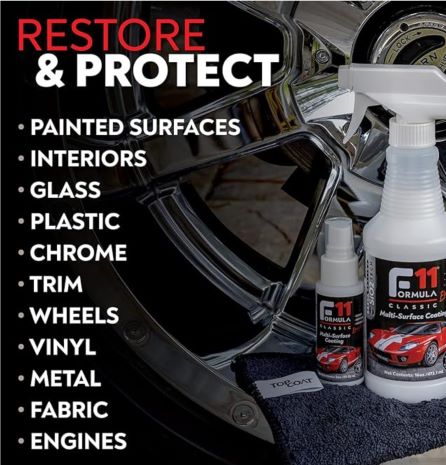Airstream trailers hold a legendary place in the world of RVs. That shiny silver exterior is one of the most recognizable looks on the road. When I first started examining RV options, I kept running into folks talking about Airstream versus the many shapes and sizes of traditional RVs.
Initially, I chalked it up to pure nostalgia; maybe it was just a retro thing? But spending time around both kinds of RVs, and now owning one, made it clear that choosing an Airstream isn’t just about appearances. There are distinct differences that impact travel, maintenance, comfort, and the entire RV living vibe.
What Makes an Airstream Stand Out?
Airstreams get attention for their polished aluminum bodies. This design has barely changed since the 1930s, making it feel pretty timeless. While a traditional RV might be boxy or use slideouts and molded fiberglass parts, an Airstream keeps things smooth and rounded.
This isn’t just about style; the shape cuts wind resistance, so towing is a bit easier than pulling something shaped like a brick down the highway. I indeed find this to be true!
Durability is a massive talking point among Airstream fans. The shell is crafted from riveted aluminum panels over a tough frame. These RVs are built to last for decades if you take care of them.
It’s common to spot Airstreams from the ’60s and ’70s still out on the road, sporting remodeled interiors. While traditional RVs can also withstand the test of time, many use wood framing that can be more susceptible to leaks and water damage after years of use.
When you step inside, you’ll notice a different vibe compared to most RVs. The interior of an Airstream is designed to make the most of every inch. There’s a cozy, open floor plan with panoramic windows letting in tons of daylight.
Traditional RVs often try to squeeze in more rooms or privacy via slideouts, which can be nice but sometimes actually make the space feel less open. The experience just hits differently, and for me, it sparks a real sense of adventure.
Bonus for pet owners: The easy-to-clean floors and furniture mean muddy paws or fur are less of a hassle, and the sturdy build can take a little more abuse. Plus, those rounded corners? Much less toe-stubbing when you’re moving around in a hurry.
Comparing Travel Comfort and Functionality
Comfort makes all the difference, especially when you spend long days driving and even longer nights sleeping on the road. In my travels, both Airstreams and regular RVs have perks, but the differences go far beyond layout or furniture choice.
Towing an Airstream is a smoother experience, ideal even for newcomers. Its lower profile and aerodynamic shape help cut down on sway, so you’re not fighting the wind every second. That means long trips will wear you out a little less, especially if you haven’t towed much before.
Traditional towables tend to be taller and boxier, so you may notice more movement on windy days. Sometimes you need extra gear or skills to keep things stable moving down the highway.
Inside, Airstream insulation does a good job of keeping things comfortable, whether the temperatures outside are hot or cold. That double-layered shell isn’t just for aesthetics; it genuinely keeps the interior temperature stable. Regular RVs use different materials.
Their performance varies based on insulation quality and your heating or cooling setup. If you love early spring or fall camping, this is worth weighing.
Traditional RVs usually offer more space to stretch out and often come with separate bedrooms or large lounges. Families, especially, like the flexibility. That said, many folks downsize to Airstreams after using bigger RVs because the open layout just feels better, even with technically less space.
Functionality comes into play if you need dedicated workspaces or multi-use living zones. Traditional RVs give you more options for built-in desks, bunks, or extended dining. However, the clever design in many Airstreams provides a sense of roominess that surprises new owners. The seamless transition from the kitchen to the living area to the bedroom is one of its most admired features.
Cost, Value, and Longevity
Price naturally grabs attention, but real value is more than just a sticker shock. Airstreams cost more up front, no two ways about it. Even older models command higher prices on the used RV market. That price covers their construction, materials, and recognizable style, which is why Airstreams hold their value much better than most other RVs.
They can be two to three times the cost of traditional, similarly sized RV trailers. But when you compare an Airstream to another traditional RV trailer, the differences stand out immediately. A visit to the Airstream Factory will also prove that fact to be true.
The resale market for Airstreams is lively. Buyers are willing to pay for a used rig because they trust the quality and know it can be customized inside. Traditional RVs can lose value quickly. Mainstream brands, in particular, depreciate if there are signs of damage or leaks. When you purchase an Airstream, you’re getting something that could still be camping out fifty years down the line.
Quality For Sure!
I was impressed with the Airstream Service Center in that they will work on and repair units that are thirty to forty years old.
Maintenance costs also usually tip in favor of Airstream, though finding shops skilled at fixing older models is important. Aluminum shells dent but rarely break down like the panels or siding on other RVs. That said, if you need major repairs, you’ll want a crew that understands the specifics. With traditional RVs, replacement parts and routine fixes are virtually everywhere, though you might find yourself attending to little repairs more often.
If you’re just going to own your trailer for a few years or swap out models regularly, the cost equation changes. However, for anyone who’s in it for the long haul, Airstream’s reputation for holding value really shines (like the exterior), even with that higher initial investment.
Choosing Based on Use Case: Travel, Living, and Adventure
Your RV lifestyle plans steer you toward the right choice. I’ve met people who stand behind their big fifth-wheel or motorhome because they travel with kids, work from the road, or spend months snowbirding. Traditional RVs with slideouts, bunkrooms, and separated living spaces can be hard to match. If you stay in one place for long periods, extra space and privacy really matter.
We have had them all: the big 5th wheel, the small Class C, two Class A motorhomes, and a half-million-dollar Super C. We lived full time in all of them. Now that we have an Airstream and have been full time since 2008, guess which one we like best? Make your guess and post in the comment area.
What Are You Going to Use Your RV For?
Airstreams come in different lengths, but space is always at a premium and is designed efficiently. For solo RVers, couples, and even pet lovers, the smart layouts work very well. The interior stays bright, easy to clean, and doesn’t feel cramped thanks to the large windows. For travelers who are always on the move or enjoy remote boondocking, the durability and tow-friendly shape make life easier.
Many people also use Airstreams for full-time living. I’ve spoken to families who’ve made it work in a 30-foot Classic, though it takes some creative use of space and a bit of flexibility. We have also found that to be true.
The community around Airstream ownership stands out in online forums and rallies, where you can connect, swap stories, and share advice. You’ll instantly find others with a similar passion, which can make the lifestyle all the more rewarding.
Day-to-day, Airstreams aren’t just for adventure; they offer a simple, connected experience. It feels less like just managing a mobile home and more like embracing a unique kind of travel.
Things Worth Considering Before Choosing an Airstream
Jumping in with an Airstream is exciting, but it’s definitely smart to keep a few things in mind first. Storage is probably the biggest tradeoff. That classic curved shape means you’ll have less overhead and underbed storage than you’d find in square-walled RVs. Packing light and using organizers becomes a must.
Don’t overlook weight, either. Even though the streamlined profile helps with towing, Airstreams are built tough; they’re not exactly lightweight, especially the tongue weight. Make sure your vehicle specs match up with the trailer you want. Always double-check towing capacity before you buy, and don’t forget to factor in cargo.
Customization is something else to think about. While factory Airstream interiors have a classic look, some older styles may not fit your taste. Redoing an Airstream is a fun challenge for folks who want to make it their own, but it isn’t for everyone.
Traditional RVs tend to have a wider range of styles and off-the-lot options. If you want true off-grid capability, keep in mind that adding things like solar or composting toilets is simple with Airstreams, but plan for upgrades based on your needs.
- Storage: Airstreams have less traditional storage; pack creatively and use every available nook and cranny. It’s best to weigh your RV when it’s ready for travel.
- Towing Setup: Even though they tow smoother, Airstreams need a capable vehicle; always check and match up weight specs.
- Off-Grid Ready: While many modern Airstreams come prepped for solar, older ones might need some upgrades, so budget accordingly.
- Resale/Refurbish: Resale value stays strong, though heavily customized interiors could make your trailer tougher to sell.
Cool Features and Everyday Perks to Expect
Natural lighting is one of my top Airstream features. The panoramic windows wrap around both ends, bathing the whole space in sunlight and giving you epic views from nearly every angle. Cooking breakfast while watching a sunrise or sunset outside your window never gets old. The use of space in the bathroom and shower is clever, often avoiding the “shoebox” feeling some RVs have.
The quality of the cabinetry and fixtures in Airstreams catches my eye on every trip. Drawers and storage compartments close securely and keep everything where it belongs, even on rough roads. Built-in beds, banquette seating, and modular furniture make traveling and lounging easier, with everything designed to last for the long haul.
Many new Airstreams arrive loaded with modern comforts: smart controls, USB outlets, Bluetooth speakers, and LED lighting. Solar power setups now come standard or as an easy upgrade, which is great for off-grid fans.
Sure, luxury motorhomes have their own set of bells and whistles like giant fridges or media rooms, but Airstreams focus on solid quality and ease of use rather than sheer size or gadget count.
Frequently Asked Questions About Airstream Vs. Traditional RV
Is an Airstream worth the extra price compared to regular RVs?
For many people, yes. The build quality, iconic look, and high resale value make it a smart buy for the long run, even though you pay more up front. This fact may not be apparent to new RVers.
Are Airstreams good for full-time living?
They’re excellent for solo travelers and couples with simple needs. Families can pull it off, but expect to get creative with storage and routines.
Is maintenance harder on an Airstream?
The aluminum shell means you avoid a lot of rot and water issues, but for serious repairs, you might need a shop with Airstream experience. Still, most owners say upkeep is easier than with wood-framed RVs.
Are traditional RVs better for large families?
If you want lots of bunks, big living spaces, and more than one bathroom, a traditional RV layout is probably simpler for large families to use together. The RV may only last five years, but so will its usefulness as families grow up.
Deciding on the Right RV for Your Lifestyle
Picking between an Airstream and a standard RV comes down to the kind of experience you want. If classic style, durability, and open interiors appeal to you, Airstream is a solid choice, especially for those who love the bright, communal vibe.
Traditional RVs are best if you crave more space, flexible layouts, or extra privacy behind closed doors. Weigh your travel needs, storage preferences, and how long you plan to keep your rig, and you’ll quickly see which style fits best. At the end of the day, both let you hit the road and create awesome memories.
No matter your pick, joining the RV community gives you serious freedom. If you want to talk through your choices, trade RV tips, or peek into daily life in an Airstream, reach out anytime.
And if you’re dreaming about remote work from the road, check out my favorite tips for internet on the go right here. This community is always open to new stories, wild adventures, and awesome rigs. Yours might just be the next one someone stumbles upon for inspiration!
__________________________________________
To learn more about us, click here.
Please feel free to ask a question or leave a comment before you read other articles on our website.
Pam and I hope that while you enjoy the RV lifestyle, you also run an online business from your RV! We do!!
With great RV connectivity, as discussed on this website, you can make money while traveling to whatever destination you desire.
Would you like to create an income while enjoying RV travel?
Is there something that you are passionate about? You can create an online business that you can run anywhere. I can help you do that!
=====> CREATE AN ONLINE BUSINESS FROM SOMETHING YOU LOVE TO DO!<=====












Recent Comments